The Beano is a British anthology comic magazine created by Scottish publishing company DC Thomson. Its first issue was published on 30 July 1938, and it became the world's longest-running comic issued weekly in 2018, publishing its 4000th issue in August 2019. Popular and well-known comic strips and characters include Dennis the Menace, Minnie the Minx, General Jumbo, The Bash Street Kids, Jack Flash, Ivy the Terrible, Jonah, Lord Snooty and His Pals, and Roger the Dodger.
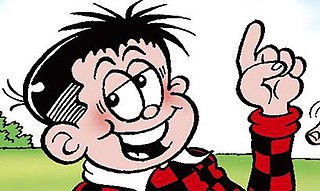
Roger "the Dodger" Dawson is a comic strip character from the comic magazine The Beano. He first appeared in his eponymous comic strip in 1953, and is one of the longest-running characters, known for his tactics of avoiding responsibility and his parents' rules, usually with the help of instructional "dodge" books.
Joseph Leo Baxendale was an English cartoonist and publisher. Baxendale wrote and drew several titles. Among his best-known creations are the Beano strips Little Plum, Minnie the Minx, The Bash Street Kids, and The Three Bears.

Minnie the Minx is a British comic strip and comic strip character published in the comic magazine The Beano. Created and originally drawn by Leo Baxendale, she first appeared in issue 596, dated 19 December 1953, making her the third longest running Beano character behind Dennis the Menace and Roger the Dodger. Minnie is generally considered to be permanently 13 years of age.
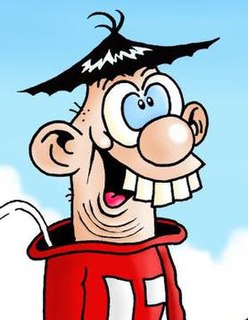
Calamity James is a comic strip in the UK comic The Beano. It is about a boy, named Calamity James, who has disastrous luck. He first appeared on 1 November 1986, in issue no. 2311. A copy of his first strip is viewable here. His strip replaced Biffo the Bear and Little Plum, which had both been reduced to a half-page by this time. He has a pet called Alexander Lemming,.
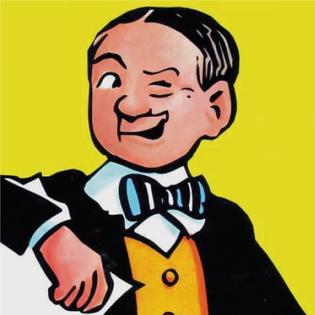
Lord Snooty is a fictional character who stars in the British comic strip Lord Snooty and his Pals from the British comic anthology book The Beano. The strip debuted in issue 1, illustrated by DC Thomson artist Dudley D. Watkins, who designed and wrote Snooty's stories until 1968, but the stories would continue featuring in Beano issues until 1991, with occasional revivals and character cameos.
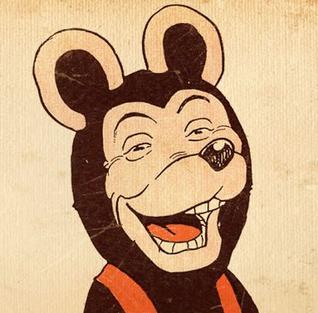
Biffo the Bear is a fiction character from the comic magazine The Beano who stars in the eponymous comic strip of the same name, created in 1948 by Dudley D. Watkins. He was the mascot of The Beano for several decades.
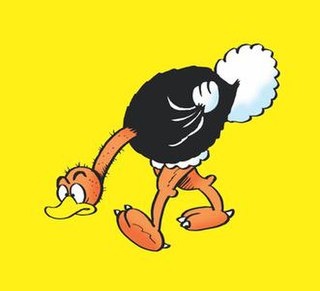
Big Eggo was a British comic strip series about an eponymous ostrich, published in the British comic magazine The Beano. He first appeared in issue 1, dated 30 July 1938, and was the first ever cover star. His first words in the strip were "Somebody's taken my egg again!". It was drawn throughout by Reg Carter.
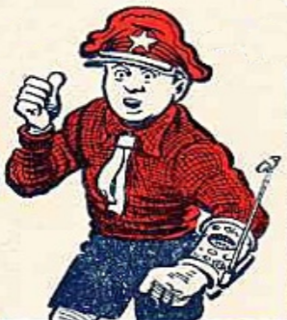
General Jumbo is a British adventure story character from the comic magazine The Beano. He starred in the eponymous adventure story series, as well as the 1971 spin-off series Admiral Jumbo, and was illustrated by a variety of Beano's usual illustrators, including Paddy Brennan. Jumbo is a well-known Beano character with numerous references in popular culture, and was the last character to have an adventure stories series.

Pansy Potter is a British comic strip character from the magazine The Beano. She first appeared in Pansy Potter the Strong Man's Daughter issue 21 in 1938 and was first illustrated by Hugh McNeill.

Beryl the Peril is a fictional character created by David Law, the creator of Dennis the Menace, for issue 1 of The Topper comic published by DC Thomson & Co. Limited. Like Dennis, she had black and red apparel, and devilishly tormented her parents and other members of her community. Despite not having quite as many appearances as other DC Thomson characters such as Dennis the Menace or Desperate Dan, Beryl is still considered one of the classic characters which define the popularity of British comics.
Hairy Dan was a British comic strip character by Basil Blackaller originally published in the magazine The Beano Comic in the comic strip of the same name. It first appeared in issue 1 on 30 July 1938 and ran until issue 297.

Wee Peem was a British comic strip character in The Beano, first written and designed by James Jewell. He starred in two comic strips between 1938 and 1957, and would get up to various forms of mischief in a similar way to later Beano strips such as Dennis the Menace and Minnie the Minx.
Classics from the Comics was a British comics magazine, published from March 1996 until October 2010. Published monthly, it was D. C. Thomson & Co. Ltd's third all-reprint comic. It replaced The Best of Topper and The Best of Beezer, which had reprinted old strips for some years.

Walter Brown is a fictional character that appears in the British comic magazine The Beano. He is the rival and antagonist to Dennis the Menace who is vilified because of his lack on interest in stereotypically masculine activities and attitudes. From his first appearance in 1953, Walter became the target of Dennis' pranks and misbehaviour but would brush it off. Sometime in the 1980s, Walter's characterisation changed after reader backlash and made him a snobbish rich boy foil to his enemies.
Jimmy and His Magic Patch was a British adventure story published in the British comics magazine The Beano in 1944. It was drawn by Dudley D. Watkins and later continued by Paddy Brennan until 1959. It starred schoolboy Jimmy Watson who time-travelled accidentally with a cloth patch on his school clothing.

Frederick James "Fatty" Fudge is a fictional character who appears in the British comics magazine The Beano. He is the best friend of Minnie the Minx, and would eventually star in his own eponymous comic strip in 1989.
Jim Petrie was a British comic artist born in Kirriemuir, Scotland. He is most notable for drawing 2,000 episodes of Minnie the Minx, a comic strip featured in The Beano, after taking over from the strips original artist Leo Baxendale in 1961. Jim Petrie's first Minnie the Minx strip appeared in The Beano dated 6 June 1961 and featured Minnie destroying her mother's feather duster to make a red indian headdress and taking her friends captive. This strip ended with Minnie being caught by her father and subsequently slippered by him, a common end for a comic strip from this era.

Jack Flash is a British adventure story character published in the British comic magazine The Beano, first appearing in issue 355 with artwork by Dudley Watkins. He featured for almost a decade in five serials, following his time as a foreigner to Earth and living in a Cornish village.













